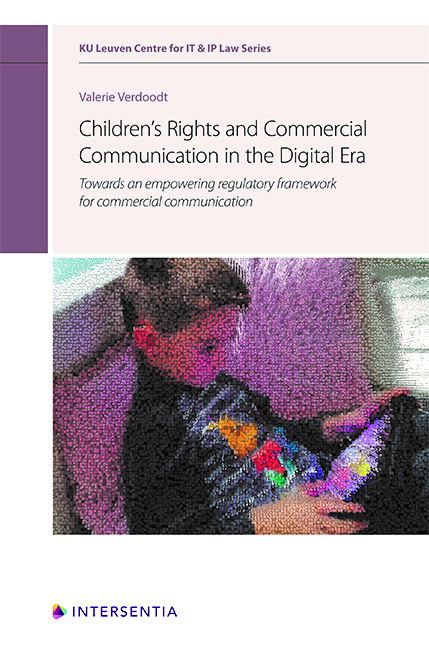 Children's Rights and Commercial Communication in the Digital Era
Children's Rights and Commercial Communication in the Digital Era Book contents
- Frontmatter
- Preface
- Contents
- Abbreviations
- Introduction
- PART I CHILDREN'S RIGHTS AND ADVERTISING LITERACY IN THE DIGITAL ERA
- PART II ASSESSMENT OF THE REGULATORY FRAMEWORK FOR COMMERCIAL COMMUNICATION IN LIGHT OF CHILDREN'S RIGHTS
- PART III ASSESSMENT OF NATIONAL ARIS IN THE AREA OF COMMERCIAL COMMUNICATION
- CONCLUDING REMARKS AND RECOMMENDATIONS FOR THE FUTURE
- Bibliography
- Miscellaneous Endmatter
Chapter I - Piecing Together the Regulatory Puzzle
Published online by Cambridge University Press: 23 July 2020
- Frontmatter
- Preface
- Contents
- Abbreviations
- Introduction
- PART I CHILDREN'S RIGHTS AND ADVERTISING LITERACY IN THE DIGITAL ERA
- PART II ASSESSMENT OF THE REGULATORY FRAMEWORK FOR COMMERCIAL COMMUNICATION IN LIGHT OF CHILDREN'S RIGHTS
- PART III ASSESSMENT OF NATIONAL ARIS IN THE AREA OF COMMERCIAL COMMUNICATION
- CONCLUDING REMARKS AND RECOMMENDATIONS FOR THE FUTURE
- Bibliography
- Miscellaneous Endmatter
Summary
SITUATION. The first part of the book has provided an introduction to the research topic and addressed the reconfiguration of children's rights and principles in the context of commercial communication. The opening chapter discussed the constitutive elements of the research (i.e. children, commercial communication and advertising literacy) and explored the difficulties that have arisen with these elements in the digital era. It was found that new trends in the area of commercial communication present significant challenges for children's advertising literacy and their commercial decision-making abilities. The examination of the policy agenda at EU and international level (starting from 2008) demonstrated that increasing attention was drawn to the protection of children against the commercial pressure online, children's privacy and data protection and the need for children's advertising literacy education. However, the existing instruments to reach these policy goals are numerous and fragmented into legislation and self- and co-regulation, hence highlighting the need for a detailed mapping and evaluation. The second chapter of the first part then analysed in detail the key children's rights principles and standards and translated them in the specific context of commercial communication. The rights and principles will now be used in the second and third part of the book as a critical lens to evaluate the existing regulatory framework for commercial communication aimed at children.
THE REGULATORY FRAMEWORK. The regulatory framework for commercial communication is fragmented into both legislative and alternative regulatory instruments. This first chapter of the second part of the book aims at piecing together this regulatory puzzle by conducting a mapping exercise of existing advertising regulation at the EU level. It focuses mostly on EU legislation, as these supranational rules were either translated into the national legal order or are directly applicable in all the Member States. Of course, there might be some additional national rules that need to be respected, however, this would entail a far too extended scope of analysis within the framework of this study. At the EU level, there are four important frameworks (or contexts) that need to be taken into account: (1) the consumer protection framework (including the Unfair Commercial Practices Directive), (2) the audiovisual media services context (including the Audiovisual Media Services Directive), (3) the e-commerce context (including the e-Commerce Directive), (4) the data protection framework (including the General Data Protection Regulation and the e-Privacy Directive).
- Type
- Chapter
- Information
- Children's Rights and Commercial Communication in the Digital EraTowards an Empowering Regulatory Framework for Commercial Communication, pp. 107 - 182Publisher: IntersentiaPrint publication year: 2020


